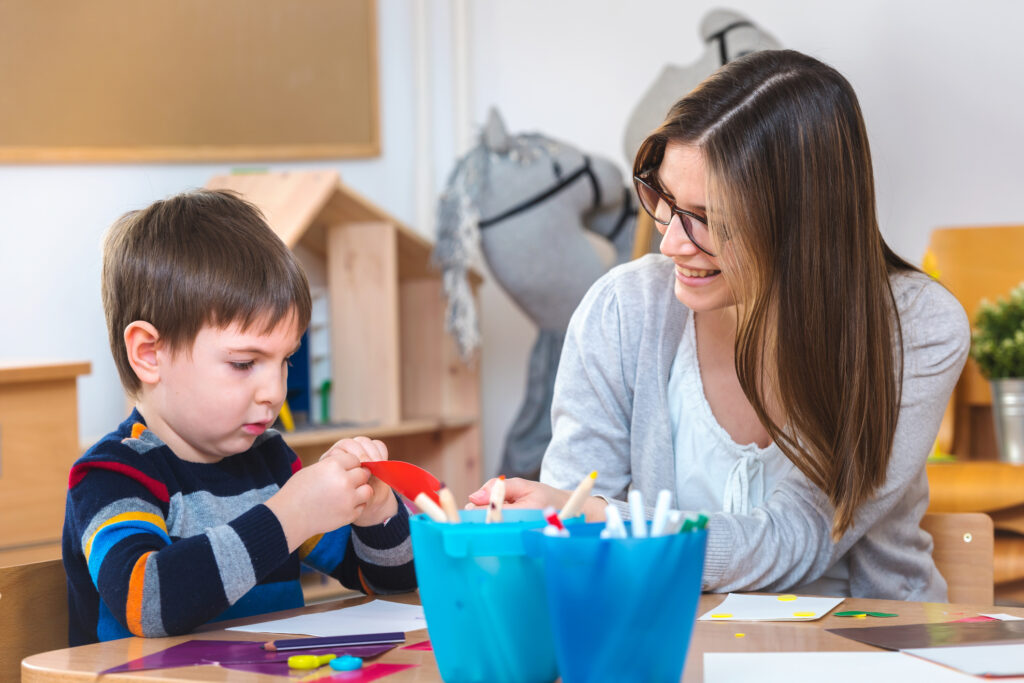When words can’t fully capture the depth of emotions or experiences, creative expression often steps in to help bridge that gap. For children, particularly, the world of art and play becomes a safe haven to express thoughts and feelings they may not yet have the vocabulary to articulate. In this blog, learn why adding art to play therapy is so powerful and how it can help your child heal, understand how to deal with their emotions in a healthy way, and more.
What Is Art In Play Therapy?
Art in play therapy is a therapeutic approach that combines artistic expression with structured and unstructured play techniques. It provides children with a creative environment where they feel empowered and safe to explore their emotions, traumas, or challenges using visual and tactile art forms.
Art in play therapy can be really effective for children who may not like to talk, don’t have the language skills or emotional development to discuss complex feelings. Therapists trained in play therapy understand child development and use techniques that align with your child’s age and individual needs. This makes therapy more effective because they will have the right tools to process their feelings outside of therapy sessions.
What Are The Benefits Of Art In Play Therapy?
The healing impact of art in play therapy goes beyond just creating art. Here are some of the key benefits:
Encourages Emotional Expression
Children often struggle to articulate their emotions verbally, especially if they’ve had trauma or dealt with major life changes. Activities like painting or drawing allow them to visually express emotions like fear, sadness, or anger, which can be otherwise difficult for them to explain.
Builds Resilience & Coping Skills
Art in play therapy doesn’t just help children process emotions, but also helps them develop resilience and adaptability. By experimenting through different creative outlets, they learn problem-solving strategies and gain confidence in themselves.
Strengthens Communication
Play therapists use creative activities as a way to help kids open up and start building trust. It’s a gentle, engaging way to get conversation started without pressure. Art can act as a “conversation starter,” allowing kids to share stories, metaphors, or experiences connected to their artwork.
Helps With Problem Solving & Creativity
Art tasks in play therapy often challenge children to think critically and creatively. Whether deciding which colors to use, how to represent an idea visually, or how to work within the constraints of materials given, they are developing essential decision-making and problem-solving skills in a playful, engaging way.

How Is Art Used In Play Therapy?
Free Drawing
Giving a child some paper, crayons, or paint, and letting them create whatever they feel like can give you a glimpse into what’s going on inside their world. Free drawing allows children to release emotions without pressure.
Guided Art Prompts
Some children benefit from more structure, so guided prompts such as “draw a place where you feel safe” or “paint your favorite memory” can help children focus on specific emotions or experiences that need exploring.
Sculpting With Clay
Clay encourages tactile engagement, (touching and manipulating the items) making it a grounding medium for children who may feel anxious or overwhelmed. It also allows them to physically shape and transform their feelings into real forms.
Role-Playing With Puppet Making
Combining art and play, puppet making helps children explore feelings and scenarios from a safe, detached perspective. They can use their puppets during role-playing activities to act out conflict and how to work through it.
Storytelling Through Art
When a child creates a picture, they’re often telling a story—sometimes real, sometimes imaginary, and sometimes a mix of both. Encouraging kids to “tell the story” of their artwork can also open the door to conversations, giving the therapist a deeper understanding of how they see and experience life.
Why Art Helps Children Heal
Children often think in images and symbols before they can form words, so art offers:
- A nonverbal outlet because some emotions—especially fear, grief, or trauma can be overwhelming or hard to name.
- Control and choice so they can create what they want.
- A safe distance to externalize their thoughts without feeling exposed or vulnerable.
Helping Children Heal Through Art In Play Therapy
Art sparks imagination and for kids, that can be the perfect playground for sharing what they’re keeping locked inside. This therapy is the groundwork for healing and self-discovery.
If you’d like to learn more about play therapy and how we’ll tailor our approach to your child’s individual needs, contact us for a free consultation.
